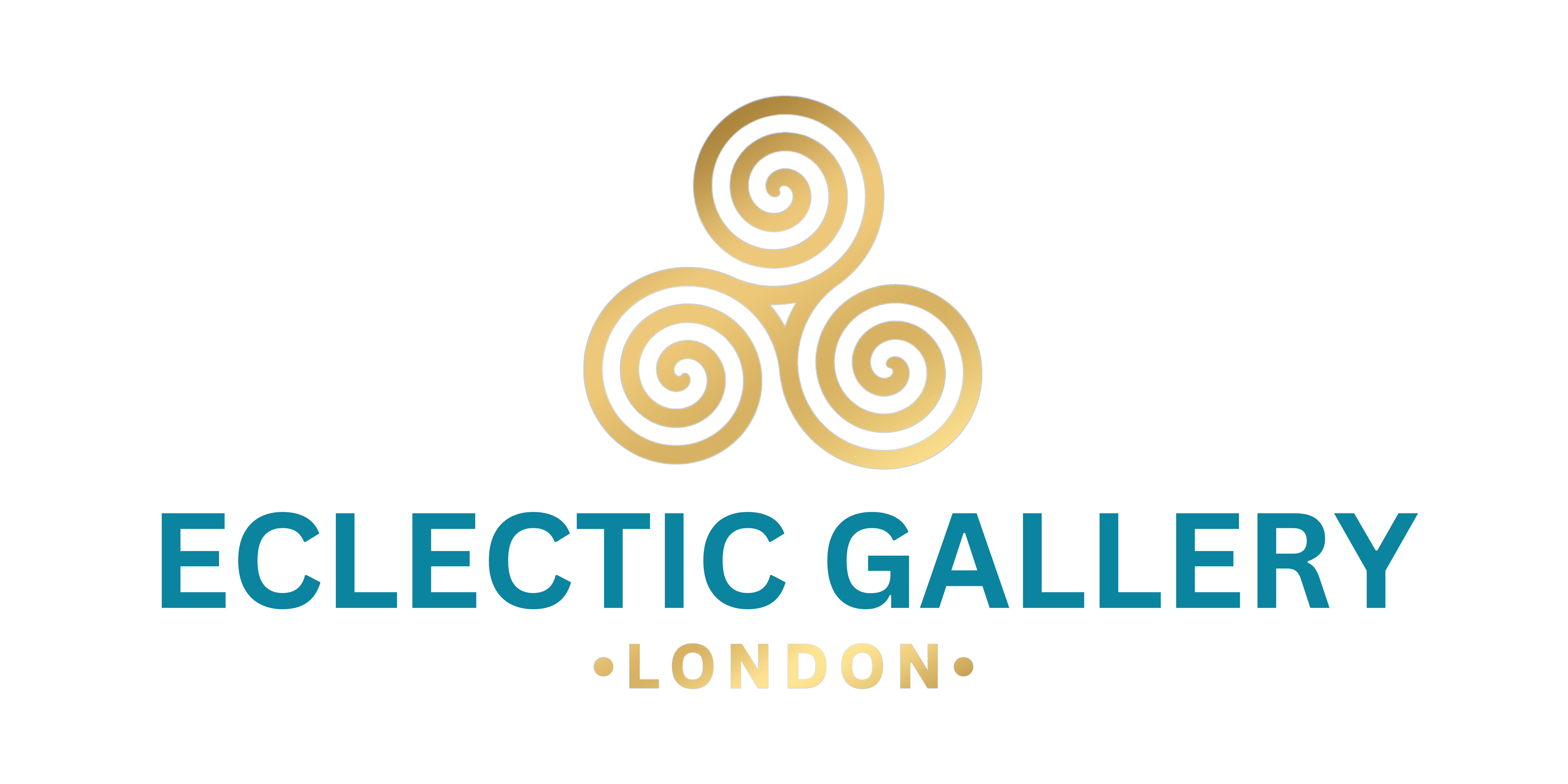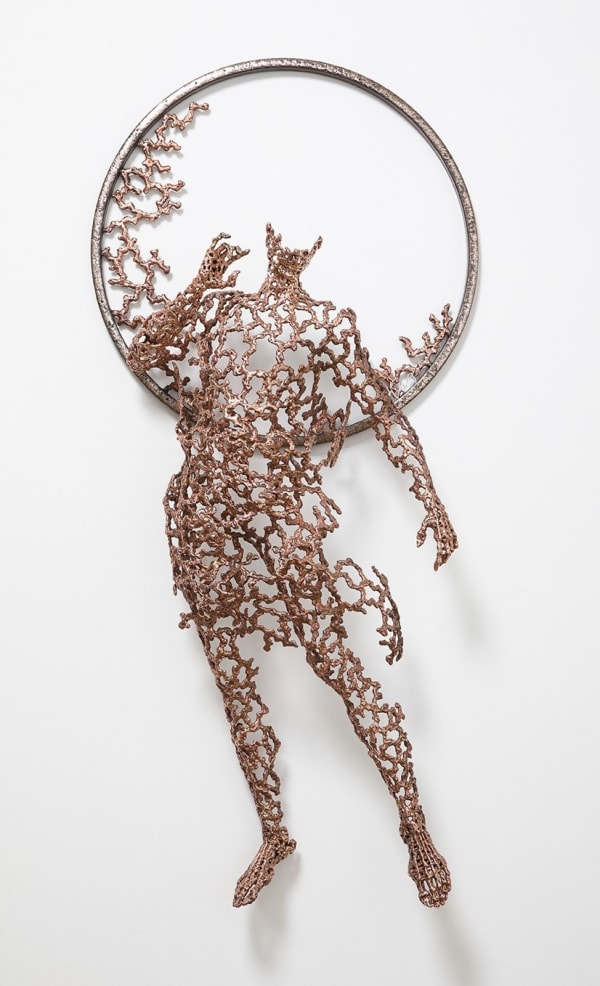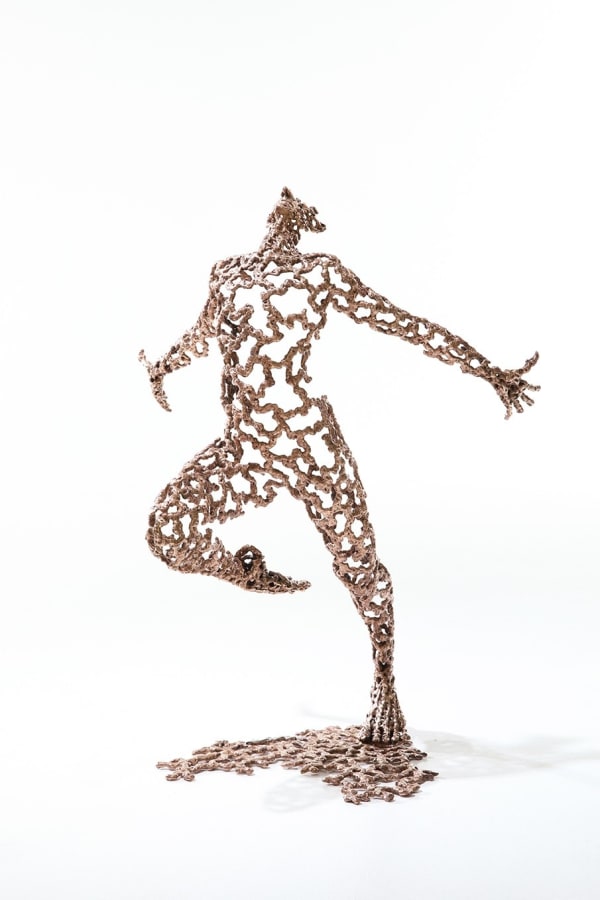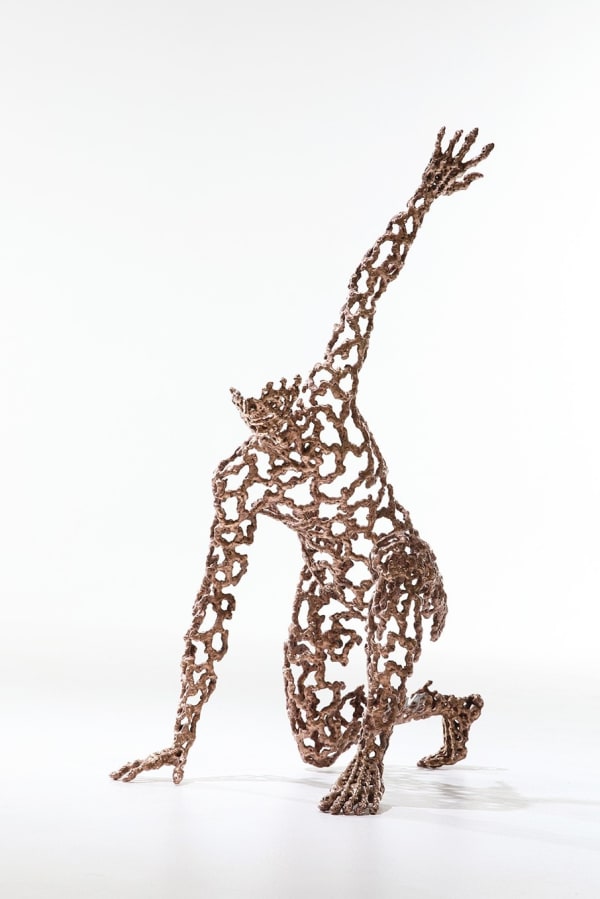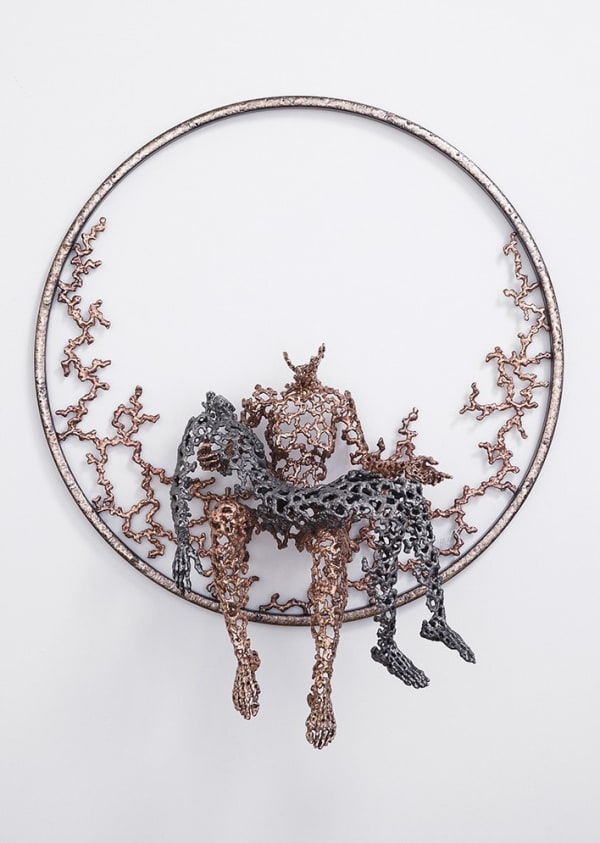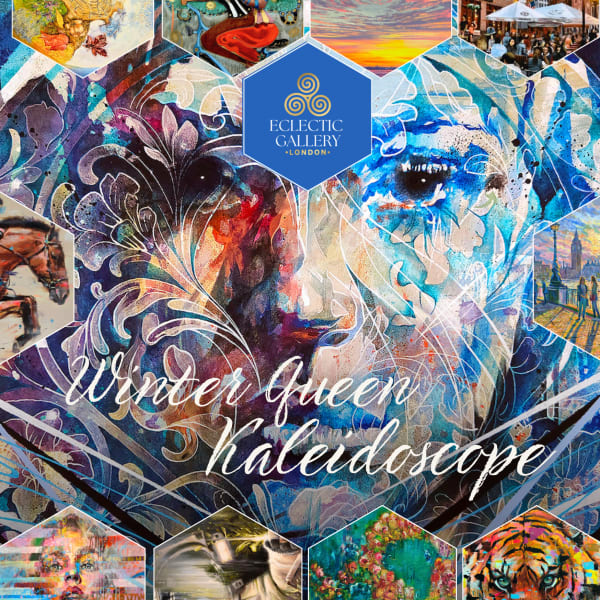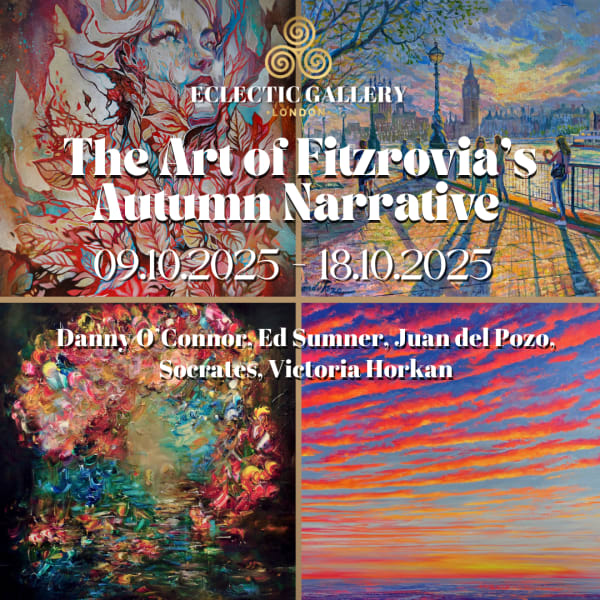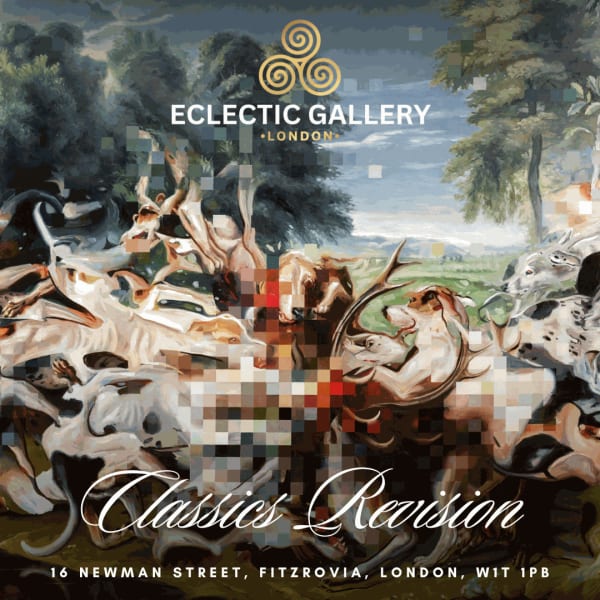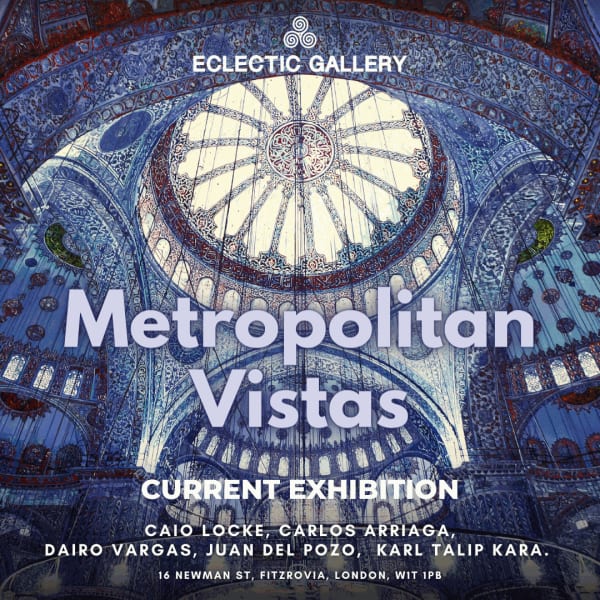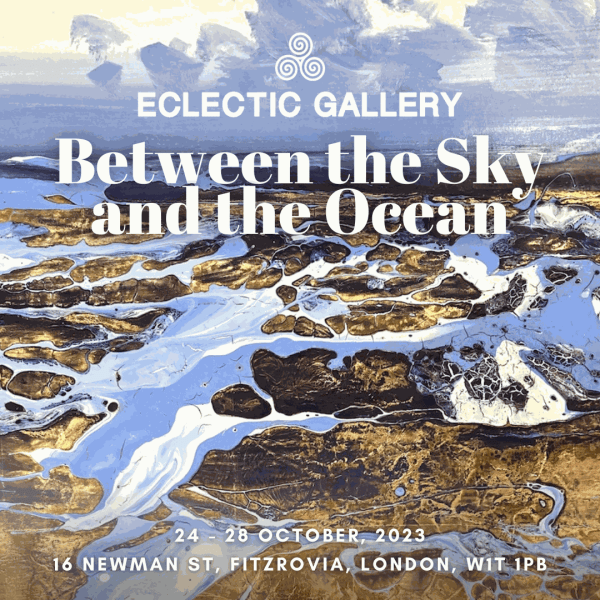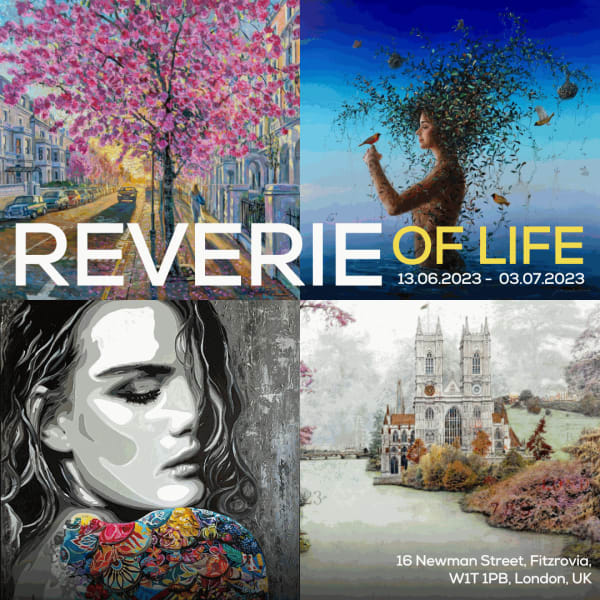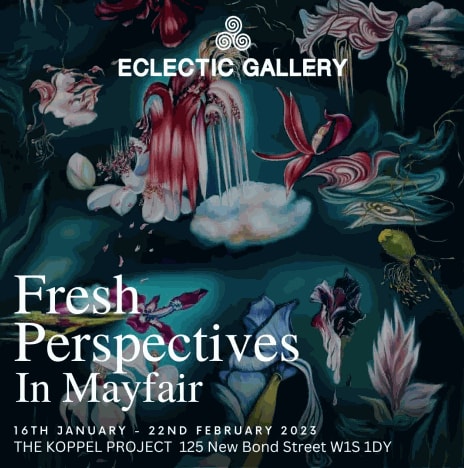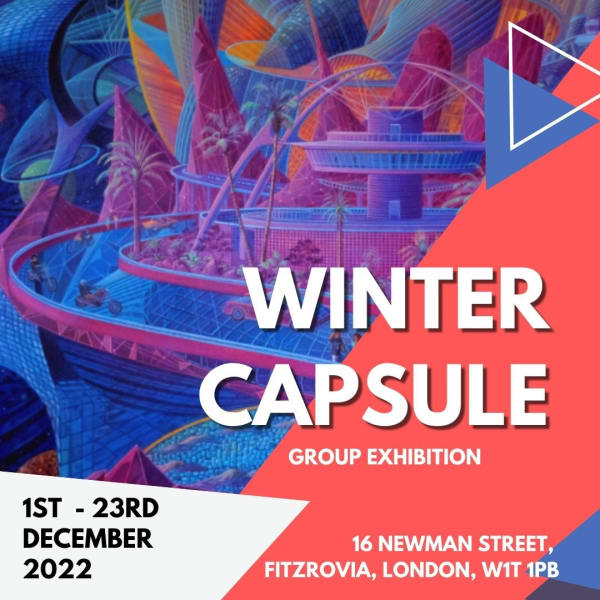Seong-Gu Lee United Kingdom, South Korea, b. 1984
South Korea
Lee’s sculptures come in three sizes: medium, large and extra-large. Compositionally they are very dynamic, having been designed to fill and complement the space around them. Some are created as wall installations, while others are free-standing. This inter-spatial interaction between the sculptures creates a strong sense of place, which every viewer can relate to and inhabit while engaging with these intricate works. For instance, Solaris 8 is a smaller figure situated within a bronze metallic circle. The figure’s posture is inviting and contemplative, focusing attention on its inner core. Chiasme 7, on the other hand, is larger and more focused on the expression of its inner strength through a proud, triumphant posture. Chiasme 83 from the same series appears to be in a semi-sitting pose, reminiscent of the Thinker.
-

Winter Queen Kaleidoscope
4 Dec 2025 - 18 Jan 2026Step into colour — Winter Queen Kaleidoscope This festive season, Eclectic Gallery presents a vibrant celebration of contemporary art featuring a dynamic lineup of international artists: Caio Locke, Danny O’Connor,...Read more -

The Art of Fitzrovia’s Autumn Narrative
9 - 18 Oct 2025The Art of Fitzrovia’s Autumn Narrative 9–18 October 2025 Eclectic Gallery, 16 Newman Street, London, Fitzrovia, London, W1T 1PB Eclectic Gallery is delighted to announce its upcoming exhibition, The Art...Read more -

The Living Canvas
18 Sep - 7 Oct 2025Eclectic Gallery presents “The Living Canvas” 18 September – 7 October 2025 Eclectic Gallery, 16 Newman Street, London Eclectic Gallery is delighted to announce its forthcoming exhibition, The Living Canvas...Read more -

Her Gaze
27 Aug - 17 Sep 2025Eclectic Gallery presents “Her Gaze”Read more
27 August – 17 September 2025
Eclectic Gallery is proud to announce its upcoming exhibition, Her Gaze, on view from 27 August to 17 September 2025.
This international group exhibition explores the theme of the feminine gaze through painting and sculpture, reflecting on how women are seen, interpreted, and celebrated in contemporary art. The works brought together highlight strength, sensitivity, and complexity, offering perspectives that are at once personal and universal.
The exhibition features paintings by Kristel Bechara, Roberta Diazzi, Salva Ginard, Ieren Hoff, Victoria Horkan, Zara Muse, Olga Rykova, and Socrates. Each artist brings a distinctive vision, using colour, form, and narrative to reveal facets of identity, resilience, and beauty.
Complementing these works are sculptures by Andrea Serra, Martic, Matteo Maruo, Nimrod Messeg, and Nonos. Their mastery of material and form adds dimensionality, with pieces that convey movement, balance, and contemplation.
Together, these artists create a dialogue that defines Her Gaze — an exhibition that celebrates diversity of vision while uniting around the shared theme of perception and presence.
For press enquiries, images, or further information, please contact:
info@eclecticgallery.co.uk
-

Summer Journey Exhibition 2025
30 Jul - 19 Aug 2025Read more -

Summer Exhibition 2025
1 - 29 Jul 2025Read more -

Chasing Spring
2 - 29 Apr 2025We are thrilled to announce that our newest group exhibition, 'Chasing Spring,' is now officially on display at Eclectic Gallery. Opened on 2nd April , the exhibition will be running...Read more -

CONTEMPORARY AND CLASSIC
12 Mar - 2 Apr 2025Contemporary and Classic” – Our New Exhibition is Here!Read more
We’re excited to invite you to our brand-new exhibition, Contemporary and Classic, where timeless elegance meets modern creativity. Join us from March 12 to April 2 to explore a curated selection of artworks that blend tradition and modernity.
We can’t wait to welcome you and share this journey through art. See you soon!
-

Colourful Splash
18 Feb - 8 Mar 2025We are thrilled to announce the opening of Colourful Splash at Eclectic Gallery, running from February 18 to March 8, 2025. This vibrant exhibition features a stunning collection of paintings and sculptures that celebrate artistic expression and color.Read more
Discover dynamic works by Max Pedreira, Salva Ginard, Kristel Bechara, Danny O'Connor, Irene Hoff, and Victoria Horkan, each with a unique style and palette. Complementing these masterpieces, breathtaking sculptures by Seong-Gu Lee, Nimrod Messeg, Martic, Andrea Serra, and Nonos add depth and texture to the exhibition.
Join us to experience this extraordinary collection! Our team is eager to welcome you and share insights into these remarkable works.
Visit Eclectic Gallery and immerse yourself in a world of color and creativity! -

Colourful Monochrome
14 Jan - 3 Feb 2025Read more -

Feeling of Calm vs Energy of Motion
16 Newman Street, Fitzrovia, London W1T 1PB, UK 4 - 25 Sep 2024Our team is thrilled to unveil our latest exhibition, 'Feeling of Calm vs Energy of Motion,' featuring captivating works by renowned artists Danny O’Connor, David Noalia, and Kristel Bechara. Additionally,...Read more -

Classics Revision
14 Aug - 4 Sep 2024Our team has transformed the space with a new exhibition featuring works by Johnny Morant, Alexey Golovin, Dairo Vargas, and Jose Antonio Ochoa. Immerse yourself in eye-catching art and join...Read more
-

Sculptural Wonders: Eclectic Gallery's Diverse Collection
Online exhibition 29 Apr - 13 May 2024Dive into a World of Artistic Splendor with 'Sculptural Wonders: Eclectic Gallery's Diverse Collection'. Explore an eclectic array of sculptures crafted from iron, bronze, stainless steel, stone, resin, fiberglass, and...Read more -

Different Waters
16 Newman Street, Fitzrovia, London W1T 1PB, UK 3 - 24 Apr 2024'Immerse yourself in the serene beauty of 'Such a Different Water', our captivating exhibition featuring breathtaking seascapes and mesmerizing portrayals of bodies of water by renowned artists Juan del Pozo,...Read more -

Metallurgical Opulence: A Fusion of Luxury by Seong-Gu Lee, Masoud Akhavanjam, Nimrod Messeg, and Martic
Online exhibition 18 - 25 Mar 2024Indulge in the unparalleled elegance of metal sculptures in 'Metallurgical Opulence', a curated collection featuring the masterpieces of renowned artists Seong-Gu Lee, Masoud Akhavanjam, Nimrod Messeg, and Martic. Discover a...Read more -

Spring - Love - Women
16 Newman Street, Fitzrovia, London W1T 1PB, UK 8 Mar - 2 Apr 2024Read more
-

Mythological Times
16 Newman Street, Fitzrovia, London, W1T 1PB 19 Feb - 7 Mar 2024Discover a world of enchantment and imagination at Eclectic Gallery's captivating new exhibition, 'Mythological Times.' Featuring awe-inspiring artworks by acclaimed visionaries Danny O'Connor, Johnny Morant, and Alexey Golovin, immerse yourself...Read more -

Cosmic Kaleidoscope
16 Newman Street, Fitzrovia, London W1T 1PB, UK 19 Jan - 15 Feb 2024Step into a cosmos of creativity at Eclectic Gallery's latest exhibition, 'Cosmic Kaleidoscope,' featuring a diverse collection of vibrant paintings and sculptures by renowned artists. Juan Carlos Navarro, Victor Goikoetxea,...Read more -

Golden Christmas
16 Newman Street 15 Dec 2023 - 18 Jan 2024Step into a world of artistic enchantment at Eclectic Gallery's newest exhibition, 'Golden Christmas,' debuting on December 15, 2023. Immerse yourself in the festive spirit as our gallery transforms into...Read more -

Metropolitan Vistas
16 Newman Street 24 Nov - 13 Dec 2023Step into a realm of artistic brilliance at our current exhibition, 'Metropolitan Vistas,' gracing the gallery space in Fitzrovia. Immerse yourself in a stunning collection featuring exquisite sculptures by Nimrod...Read more
-

Between the Sky and the Ocean
24 Oct - 11 Nov 2023Step into the enchanting world of contemporary art at Eclectic Gallery's latest exhibition, 'Between the Sky and the Ocean.' Located at our permanent gallery space, this extraordinary collection features an...Read more -

Suspended Perspectives: Contemporary Hanging Sculptures by Nimrod Messeg, Viktor Goikoetxea, Nonos, Seong-Gu Lee
Online Exhibition 16 - 23 Oct 2023Discover a world of contemporary artistry with our online exhibition featuring an exquisite collection of hanging sculptures by renowned artists Nimrod Messeg, Viktor Goikoetxea, Nonos, and Seong-Gu Lee. Immerse yourself...Read more -

Autumn Light
25 Sep - 15 Oct 2023Eclectic Gallery proudly presents 'Autumn Light,' a mesmerizing celebration of the season's vibrant hues and the eclectic talents of our represented artists. Immerse yourself in a symphony of autumn colors...Read more -

Architectural Fantasia
Capturing the Spirit of the Built Environment 4 - 25 Sep 2023Welcome to "Architectural Fantasia," a captivating art exhibition that celebrates the intersection of art and architecture. From September 4th to September 25th, 2023, Eclectic Gallery invites you to immerse yourself in the world of architectural creativity as envisioned by a talented group of artists.Read more
At the heart of this exhibition lies a rich tapestry of artistic expression, where each artist weaves their unique narrative inspired by the architectural landscape. Caio Locke, known for his abstract cityscapes that capture the essence of bustling urban life, evokes the energy and dynamism of these spaces. Juan del Pozo's vibrant and colourful paintings bring historical buildings to life with a lively and dynamic quality, offering fresh perspectives on architectural forms. Carlos Arriaga, a master of wondrous collages featuring London's architectural landmarks, challenges conventional perceptions of space and structure.
Nimrod Messeg, a sculptor renowned for his work with iron, transports you to realms where reality and imagination meld seamlessly. Masoud Akhavanjam, another sculptor specializing in stainless steel, captures the soul of architectural structures, revealing their hidden stories through the lens of his camera. Seong-Gu Lee, celebrated for his sculptures in stainless steel and bronze, beckons us to explore the intangible aspects of architecture, rooted in profound philosophical thought. Nonos' abstract interpretations inspire us to see design from fresh perspectives.
"Architectural Fantasia" is more than an exhibition; it's an exploration of the symbiotic relationship between artists and the built environment. These creators invite you to see architecture not just as a structure but as a source of endless inspiration. Through their art, they challenge us to reconsider the spaces we inhabit and inspire us to view architecture through a new, artistic lens.
We hope you'll join us on this remarkable journey through "Architectural Fantasia." Discover the magic that unfolds when art and architecture unite, and let your imagination soar.
-

Contours of Strength and Grace
16 Newman Street, London W1T 1PB 25 Jul - 14 Aug 2023Read more -

Artistic Alchemy
7 - 31 Jul 2023Read more -

Crossroads of Expression
3 - 25 Jul 2023Read more -

Reverie of Life
16 Newman Street, London W1T 1PB 13 Jun - 3 Jul 2023Dear Art Enthusiast,Read more
We are delighted to extend a warm invitation to our exhibition, "Reverie of Life," showcasing a remarkable selection of artists from the 13th of June to the 3rd of July. Immerse yourself in the captivating works of Carlos Arriaga, Juan Carlos Navarro, Juan del Pozo, and Kristel Bechara.
We cordially invite you to visit our permanent location at 16 Newman Street, Fitzrovia, London, W1T 1PB, where we have curated an extraordinary collection that embodies the essence of contemporary fine art. Prepare to embark on a visual journey that will leave you inspired and moved.
This exclusive showcase provides a unique opportunity to witness the diversity and richness of our carefully selected artworks. Our knowledgeable team will be readily available to guide you through this enchanting experience, answering any questions and sharing insights into the artists and their creations.
We eagerly await your presence at our exhibition, where we aim to ignite your passion for art and share the boundless creativity of the artists we proudly represent. Join us in celebrating the power of artistic expression and the profound connection it creates.
Kind regards,
Eclectic Gallery Team
-

Curated Eclecticism
Pop-up Exhibition at OXO 22 May - 12 Jun 2023Step into a captivating world of artistic brilliance and immerse yourself in the vibrant colours and creative energy of the pop-up exhibition hosted by Eclectic Gallery. Nestled beside the picturesque River Thames, this enchanting summer-themed showcase promises to transport you to a realm where imagination knows no bounds.Read more
As you enter the exhibition space, a warm breeze carries the whispers of the nearby river, enhancing the ambience and setting the stage for a truly unforgettable experience. The gallery, adorned with elegant drapes and adorned with lush greenery, evokes a sense of tranquility that complements the sunny season.
The walls come alive with a mesmerising display of artworks, carefully curated from the talented artists featured on Eclectic Gallery's website. Each piece carries its own unique story, inviting you to embark on a visual journey that celebrates the wonders of summer. From sun-kissed landscapes to vibrant floral compositions, the collection showcases a diverse range of styles and techniques, ensuring there is something to captivate every art enthusiast.
Roaming through the exhibition, you'll encounter exquisite oil paintings that capture the golden hues of a summer sunset, evoking feelings of warmth and nostalgia. Delicate watercolour masterpieces transport you to idyllic gardens bursting with blooming flowers, where nature's beauty takes centre stage. Mixed media artworks showcase the fusion of creativity and innovation, combining textures, colours, and elements in unexpected ways, adding an extra layer of intrigue to the display.
Eclectic Gallery's dedication to showcasing emerging talent shines through in this summer-themed exhibition, as you discover the works of both established artists and rising stars. The event serves as a platform to celebrate the diversity and depth of artistic expression, inviting dialogue and fostering connections within the art community.
As the sun casts a gentle glow through the gallery windows, casting delicate shadows on the artwork, you'll feel a renewed sense of appreciation for the beauty that surrounds us. Whether you are an avid art collector, an enthusiast, or simply seeking a respite from the bustling city, the Eclectic Gallery's pop-up exhibition is a must-visit destination this summer. Prepare to be captivated, inspired, and transported to a world where art and nature intertwine, all within the embrace of the riverside ambiance. -

Suspended Realms
A journey through artistic dimensions 21 - 28 Apr 2023Read more -

Urban Serenity
16 Newman Street, London, W1T 1PB 21 Feb - 14 Mar 2023Read more -

Elegant Masculinity
16 Newman Street, London W1T 1PB 1 - 21 Feb 2023Read more
-

Fresh Perspectives in Mayfair
125 New Bond Street, London W1S 1DY 16 Jan - 22 Feb 2023Eclectic Gallery is very pleased to present our Pop-Up Exhibition “Fresh Perspectives in Mayfair“ , from the 16th of January to the 22nd of February 2023 at 125 New Bond...Read more -

Winter Capsule
16 Newman Street, London W1T 1PB 1 - 23 Dec 2022Read more -

Black Friday exhibition
16 Newman Street 22 - 30 Nov 2022Read more
